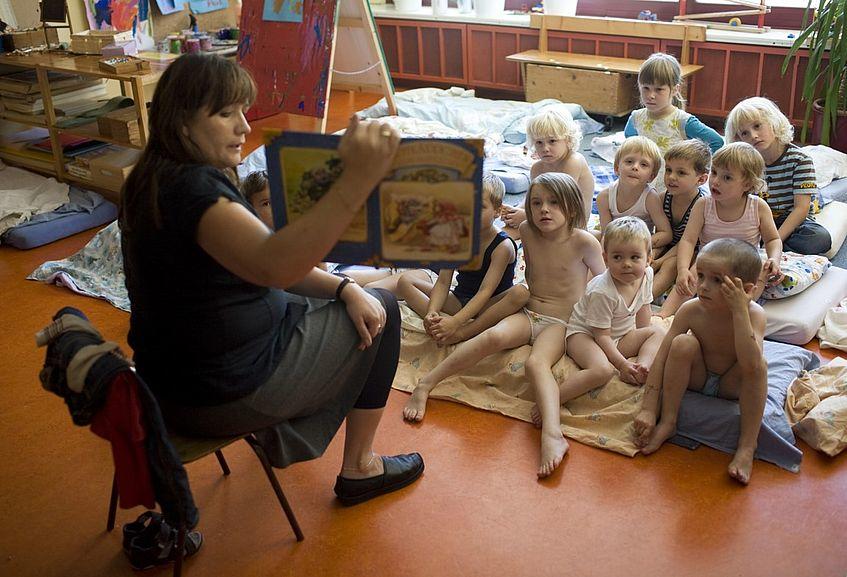CHILDCARE RESEARCH
Third Party Funding: Stiftung Auxilium; 120,000.00 € (together with Herbert Scheithauer/Free University Berlin)

Research Spot 1: Adjustment to Public Child Care
The transition to out-of-home care is one of the most stressful events for children in early childhood; however, the impact of it on child stress regulation is still poorly understood. Based on saliva cortisol and heart rate measures before, during and after the children’s adaptation to a group care setting, we examine how the cortisol levels and the heart rates of the children are elevated after they started child care, and the decrease that follows. We also explore the conditions which may be explained by the decrease of these stress indicators, and aim to analyze the complex patterns of stress compensation by mixed modelling.
Associates: Tina Eckstein-Madry, Bernhard Piskernik, and Lieselotte Ahnert
Research Spot 2: Care Provider-Child Relationships
The project deals with relationships that children experience in out-of-home care, which are provided as center-based care (public child care centers) or home-based care (with child minders in their homes or pooled together in rented facilities). Whereas these relationships have proven to carry attachment-like characteristics, much less is known about how these characteristics vary in terms of the types of care settings. We thus explore the mechanisms which may underlie the emerging caregiver–child attachments. Different to mother-child attachments which individually develop based on the interaction processes within the mother-child dyad, non-maternal caregivers are not always able to take children’s individual needs into account during group care. Therefore, we focus on the group orientations in caregivers.
Associates: Nicole Zaviska, Tina Eckstein-Madry, Barbara Supper, Claudia Hruska, and Lieselotte Ahnert
Research Spot 3: Developmental Consequences of Public Child Care
Out-of home care during children’s early years is not generally a risk. Thus, we carefully examine whether their practice is appropriate for children’s development, even when we are sure of the “high quality” of the care settings. Given the different care conditions of center-based and home-based care arrangements, we investigate the impact of those settings on child developmental outcomes. We assume that children’s capacities to explore the new environment and learn will be triggered differently in the different settings, and, as follows, will have different developmental consequences for the emotional, social, cognitive and language development of these children.
Associates: Nicole Zaviska, Tina Eckstein-Madry, Barbara Supper, Bernhard Piskernik, and Lieselotte Ahnert